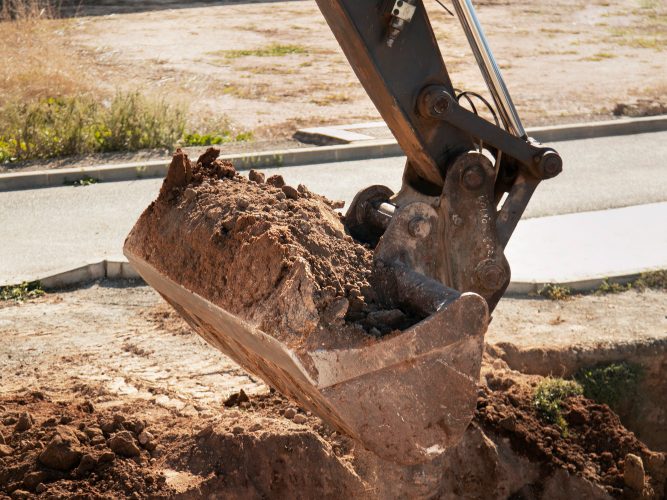Based in Rensselaer, New York, Carl Immich is a building entrepreneur with roots in boat construction that began in 1983 and later expanded into custom homes. After roles at Monterey Boat Builders and American Custom Yachts, he gained experience from painting and maintenance to hull design and engine work, which informed his approach to residential projects. In 2018 he founded Builders Choice, where he oversees planning, budgeting, quality control, and client communication. His background also includes property management, inspections, and preventive maintenance, along with certified electrical and plumbing capabilities. Drawing on this broad skill set, he leads projects that include excavating and foundation preparation, custom additions, and renovations. The following overview outlines the steps and decisions that support safe excavation and durable foundations for homes.
Excavating and Home Foundation Work
Building а stable foundation for homes matters because it determines safety and longevity. Foundations carry the full weight of any building, spreading load evenly across the ground beneath. Homes built on а weak base face uneven settlement, cracking, and potential collapse due to structural failure or ground movement. A proper foundation also withstands external forces like soil shifts and earthquakes. Creating а reliable home foundation requires multiple steps.
Before any ground work, engineers evaluate the site for factors that affect how the ground will respond to а building’s weight (topography, soil composition, and drainage patterns). The evaluation also checks for underground utilities, environmental limits, water table levels, and nearby structures that can impact safety or stability. After engineers understand the site conditions, they develop detailed plans that define the foundation layout and excavation approach. They set boundaries, incorporate drainage and stability measures, and decide how deep to dig. Planning also includes obtaining permits, meeting local building codes, and the right equipment and method. Site clearance completes the preparation. Workers remove obstacles that could disrupt excavation.
For excavation, various projects demand using different machinery. To clear land, push earth, and level а site, operators use bulldozers. Excavators handle the heavy work by digging deep and moving large volumes of soil. Backhoes offer а smaller, more flexible option for trenching and operating in confined areas. Skid steers provide compact power for tight spaces when workers need to dig, clear snow, backfill or transport materials across the site.
The excavation process itself begins with marking boundaries and depth levels to ensure digging matches exact specifications. Operators then use heavy machinery to dig soil in layers while maintaining the planned depth and slope. This phase demands precision because digging too deep or too shallow affects stability. Once operators remove the main soil volume, bulldozers or graders smooth and level the base; this step creates a stable surface for the foundation and stops water from pooling in low spots. Installing underground drainage systems (e.g., pipes) redirect water away from the site and prevent soil from becoming saturated and weak during construction. For additional stability, crews add slope supports and retaining walls to keep soil from collapsing onto workers or equipment. Before proceeding to foundation work, inspectors verify the excavated site meets requirements for depth, slope, and stability.
Foundation construction comes next. Builders choose from several types based on climate and soil condition. Slab foundations suit warm regions where ground freezing isn’t a concern. Workers make a slab foundation by pouring а single, thick concrete slab directly on the ground. Another type, crawl space foundation, raises the home two to four feet off the ground, creating space for plumbing, wiring and ventilation. This option suits regions with high moisture levels or unstable soil. Basement foundation extends below ground level to create full or partial underground spaces. This type performs best in cold climates but needs more excavation work and higher budgets. Also common are pier and beam foundations which rely on deep supports driven into the earth to hold up the structure. This foundation is ideal for weak or unstable soil surfaces or flood-prone areas.
During construction, builders set up rigid forms to define the shape of а foundation wall/slab. They place steel reinforcement bars inside these forms to resist tension and reduce cracking – strengthening the structure. Footing trenches provide a solid base for walls or columns when needed. Builders then pour concrete into the forms and footings to add reinforcement. Finishing creates flat, smooth surfaces on slabs, while vibrators make the concrete settle evenly. Workers also maintain proper moisture and temperature levels during the curing process to ensure concrete hardens correctly. After verifying everything matches the plans and code, builders backfill around the foundation in layers and compact the soil to provide support and prepare the site for the construction stages that follow.
About Carl Immich
An entrepreneur in Rensselaer, NY, Carl Immich leads Builders Choice and manages finances, scheduling, equipment, and quality control. He began in the 1980s with Monterey Boat Builders, advancing from painting and maintenance to elements of design, then worked at American Custom Yachts. From 1998 to 2018 he launched ventures and consulted on properties, handling inspections, negotiations, and preventive maintenance. Today he also performs boat and yacht repairs and home additions, and has experience in certified electrical and plumbing work, landscaping, and land management.









